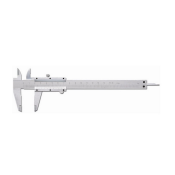Free ASVAB Practice Tests
-
Every Test is UniqueCustom software and unique templates randomize questions, answers, and variables every time you take a new test. You'll never take the same test twice!
-
1,557 Questions, Problems & Flash CardsHuge database of 668 multiple-choice questions, 135 math and algebra problems, and 754 flash cards to help you prepare for the ASVAB.
-
Detailed SolutionsGet a question wrong? All questions and problems have detailed answer explanations so you can learn exactly how to get it right the next time.
-
Know You're ReadyWant to know how you stack up? When you're done with a practice test you can compare your score to everyone else who has ever answered those questions.
-
Interactive Study GuideDetailed ASVAB study guide, MOS study guides, and line score study guides outline exactly what you should know to earn your target scores and customized tests and flash cards for each topic let you laser focus your limited study time.
-
Brand New for 2019ASVAB Test Bank has been completely redesigned for 2019 with all new questions, problems, and flash cards. And the redesign isn't done! Coming soon:
- More Content
- More questions, problems and flash cards
- Bookmarks
- Create a custom study guide with just the topics you're studying
- Score Estimator
- Custom estimate of your potential ASVAB score
Plus printable tests, Q&A, and an ad-free upgrade. Have a suggestion? Please let us know what you want!
Take an ASVAB Practice Test
Sample Practice Test Questions
An inductor __________ changes in the electric current flowing through it.
resists
An inductor is coiled wire that stores electric energy in the form of magnetic energy and resists changes in the electric current flowing through it. If current is increasing, the inductor produces a voltage that slows the increase and, if current is decreasing, the magnetic energy in the coil opposes the decrease to keep the current flowing longer. In contrast to capacitors, inductors allow DC to pass easily but resist the flow of AC.
During the water cycle, water enters the atmosphere as a gas through which process?
transpiration
The water (hydrologic) cycle describes the movement of water from Earth through the atmosphere and back to Earth. The cycle starts when water evaporates into a gas from bodies of water like rivers, lakes and oceans or transpirates from the leaves of plants.
The distributor is responsible for:
timing the spark and distributing it to the correct cylinder
The distributor is driven by the engine's camshaft and is responsible for timing the spark and distributing it to the correct cylinder. The distributor cap contains a rotor that connects the ignition coil (and its high voltage) to the proper cylinder at the proper point in the stroke cycle.
Respiration is the process by which __________ absorb oxygen and eliminate carbon dioxide.
blood cells
The respiratory system manages respiration which is the process by which blood cells absorb oxygen and eliminate carbon dioxide.
An element in the physical state of __________ maintains a constant volume and shape.
solid
An element in a solid state has atoms or molecules that are constricted and do not move freely. Solids maintain a constant volume and shape and exist at a lower temperature than liquids or gases.

This tool is a(n) __________.
vernier caliper
Calipers are similar to micrometers in shape but instead of measuring distances, calipers are used to transfer distances between objects. An outside caliper is used to transfer outside dimensions while an inside caliper is used to transfer inside distances. A vernier caliper is an extremely precise caliper (down to \({1 \over 1000}\) inch) that allows measuring / transferring either inside or outside dimensions.
Potential energy is energy that has the potential to be converted into what?
kinetic energy
Potential energy is the energy of an object by virtue of its position relative to other objects. It is energy that has the potential to be converted into kinetic energy.